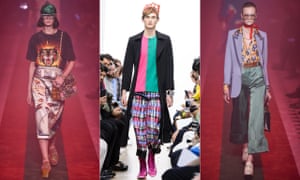
Accidentism, as the phrase indicates, doesn’t depend much on complying and preparing. It is a viewpoint embodied by strong colors, kitsch styles, a feeling of positive outlook and a feeling of fun. It’s exactly what the world needs right now and, fortunately, it is all over the springtime catwalks.
Josef Honest, an Austrian developer, developer and theorist, created the phrase “accidentism” in 1958 (although he practised it throughout his career). His viewpoint began as a response to the dull homogeny of postwar Western style. The concept is that if you like something, it will look excellent next to something else you love; that convenience should succeed over functionality.
Frank designed his profession developing modernist structures but, after running to Norway in 1933, he began dealing with material, working together with Remedial producer Svenskt Tenn. His work – which seems to be in an display at London’s Style and Fabric Art gallery – includes faux-naif printing and fabrics, presenting fruits, blossoms, parrots and seeing stars. Rich and very subjective, his printing resembled an all-natural problem. In other words, they thought in existence. “I’m of the viewpoint that much that is great comes about merely through opportunity and not meticulous preparing,” he once said.
His visual of contrasting colors, irregular styles and randomness also comes out in the styles of this season’s catwalks. In womenswear, Gucci’s spring/summer look presented incongruous materials, designs and 1940s-v-1970s interval styles and, in men's clothing, JW Anderson showed vibrant separate items constructed randomly. But from Zandra Rhodes, who raised “fashion style to wearable performs of art”, to Jean John Gaultier and Religious Lacroix in the 90's, “anti-design” (as Frank’s experts known as it) is a repeating concept popular.
“Happy-accident putting on a costume has long been taken to convey originality,” confirms fashion curator and beautician NJ Stevenson. “Fashion tends to use the phrase ‘eclectic’, but I think to intellectualise this into ‘accidentism’ is ideal.” If nothing else, it indicates “fashion can show wit”.
Dennis Nothdruft, curator at the museum, agrees: “Whimsy and humor were on Frank’s thoughts when he was developing.” He recognizes Frank’s styles as personal, very subjective, but also unifying. “And we need it now,” he says, “something impressive.” Taking into consideration that Honest was running Nazi Luxembourg, the autobiographical tenor is unique. By responding against homogeny he was complicated the complying of modernism. “We did think about this when we began out the display. The moment experienced right.” Given activities recently, and the progressively politicised fashion and social field, it is hard not to see the commonalities.
No comments:
Post a Comment